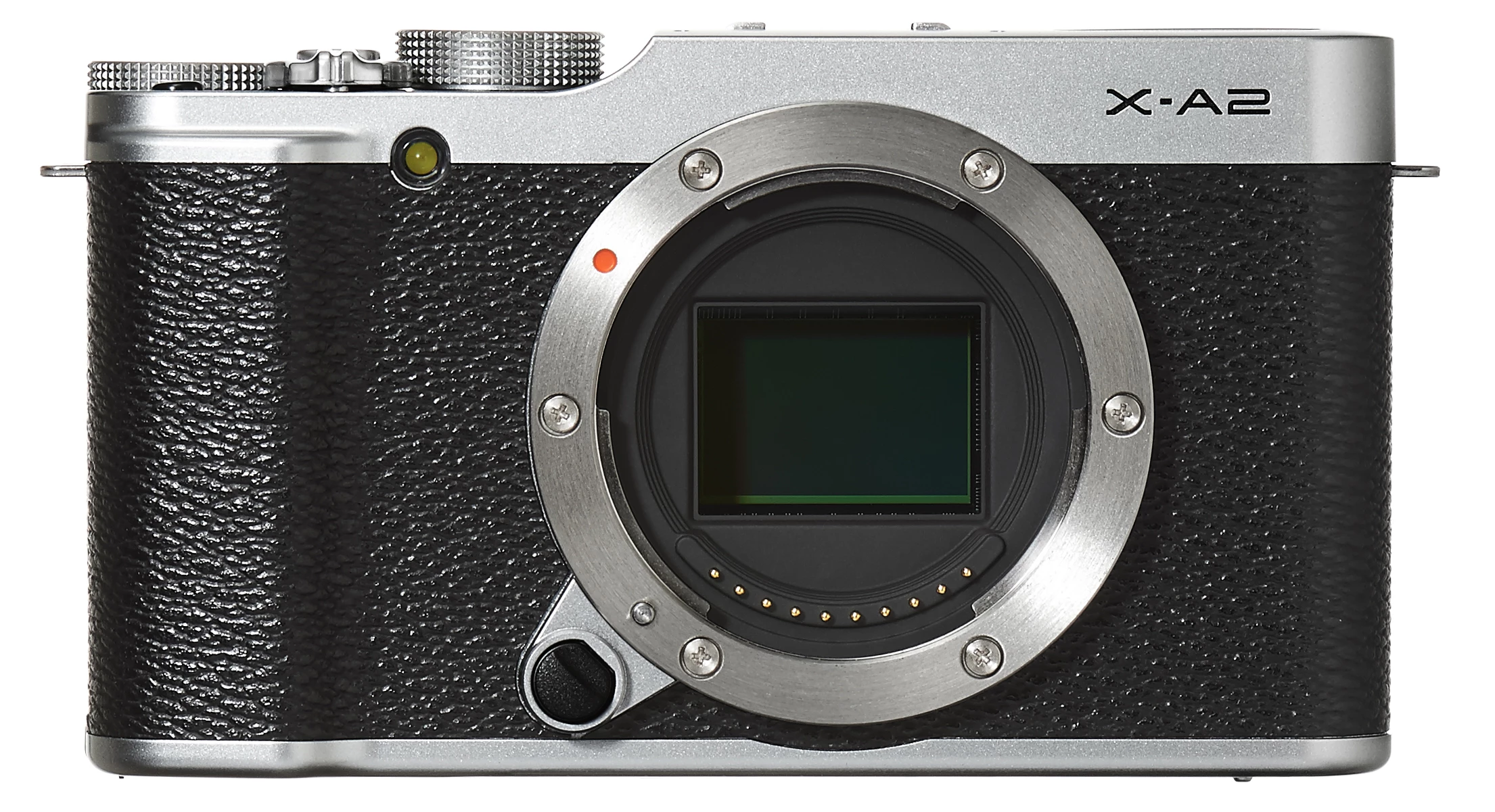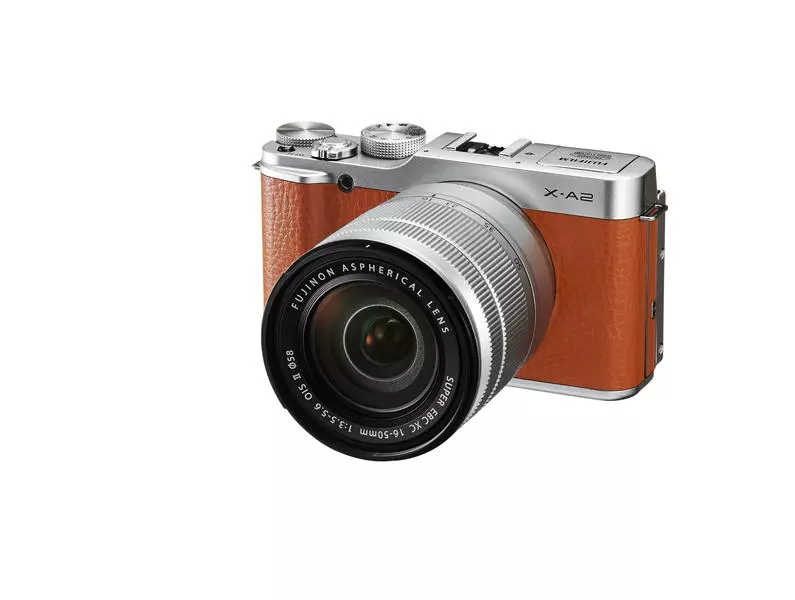Fujifilm has revealed a number of new cameras, with the headline attraction being the X-A2. The new interchangeable lens camera is designed for selfie-obsessed photographers who don't want to compromise on image quality, and is the first X-series model to feature a 175 degree tilting LCD screen. Other selfie-friendly features include Eye Detection AF, and a Portrait Enhancer mode which makes a subject's skin look brighter and smoother.
Fujifilm X-A2

The Fujifilm X-A2 can be seen as a minor update to the X-A1, but if you like to appear in your own photos, the changes could make all the difference. Features staying the same include a 16-megapixel APS-C (23.6 x 15.6 mm) CMOS sensor, a native ISO range of 200 to 6400 which can be extended as high as 25600, and a maximum burst speed of 5.6 fps. Full HD 1080p video recording is also possible at 30 fps and built-in Wi-Fi is included for easy sharing and remote shooting.
The big change is the tilting LCD, which still measures 3-inches with 920k dots, but can now be tilted up to 175 degrees upwards for selfie-friendly shooting. The monitor on the A1 had a more limited range. When fully tilted, the X-A2 automatically kicks into a new Eye Detection AF mode, which as the name suggests, automatically focuses on the eyes of a subject. Meanwhile, a new Portrait Enhancer mode can be used to produce more flattering portraits.
A budget-friendly entry-level model, the Fujifilm X-A2, will be sold with a new XC 16-50-mm (24-75-mm equivalent) F3.5-F5.6 OIS II zoom kit lens. The new glass features built-in optical image stabilization of approximately 3.5-stops, and has a minimum working distance of 15 cm (6 in) for macro photography.
Fujifilm XQ2

The XQ2 is a new premium compact camera which should be able to offer high image quality in a pocketable device. It combines a 12-megapixel 2/3-inch (8.8 x 6.6 mm) X-Trans CMOS II sensor with a 25-100-mm equivalent F1.8-F4.9 lens and an EXR Processor II. Autofocus is said to be considerably quicker than most compacts thanks to a Hybrid system which combines contrast and phase detection.
An ISO range of 100 to 12800 should also help ensure quality images in a variety of lighting conditions, and the XQ2 has a maximum burst speed of 12 fps, and can record Full HD 1080p video footage at 60/30 fps. A rear 3-inch monitor has 920k dots, and built-in Wi-Fi makes it easy to share content.
Fujifilm FinePix S9900W and S9800

Two new DSLR-styled bridge cameras have also been announced by Fujifilm, the FinePix S9900W and S9800 which both feature super-zoom 24-1200-mm equivalent F2.9-F6.5 lenses. Other common specs include 1/2.3-inch 16.2-megapixel BSI CMOS sensors, an ISO range of 100-12800, and continuous shooting speed of 10 fps.
Both cameras also have 920k dot electronic viewfinders, 3-inch rear LCDs with 460k dots, and can record Full HD 1080p video at 30 fps and 720p HD at 60 fps. The main difference between the two cameras is that the S9900W also features built-in Wi-Fi for image transfer and remote shooting.
Fujifilm FinePix XP80

If you're into action, the waterproof (15 m/50 ft), shockproof (1.75 m/5.8 ft), freezeproof (-10°C/14°F) and dustproof FinePix XP80 might be more to your liking. The rugged camera features a 16.4-megapixel 1/2.3-inch BSI CMOS sensor, a 28-140-mm equivalent lens, and can record Full HD 1080p video at 60 fps.
An optional Action Camera Lens can be used to give a wider 18.5-mm equivalent view with a new Action Camera Mode automatically turning off the LCD for extended recording times when mounted to your sporting equipment. Other features of note include built-in Wi-Fi for sharing and remote shooting, and an interval shooting mode for producing time-lapse videos.
The Fujifilm X-A2 will be sold for US$550 with the new kit lens, when it goes on sale at the end of February, along with the $400 XQ2. The other cameras will all land in March, with the FinePix S9900W costing $350 and the S9800 coming in at $330. The XP80 will set you back $230.
You can check out a promo video about the Fujifilm X-A2 below.
Product pages: Fujifilm X-A2, XQ2, S9900W and S9800, XP80



























